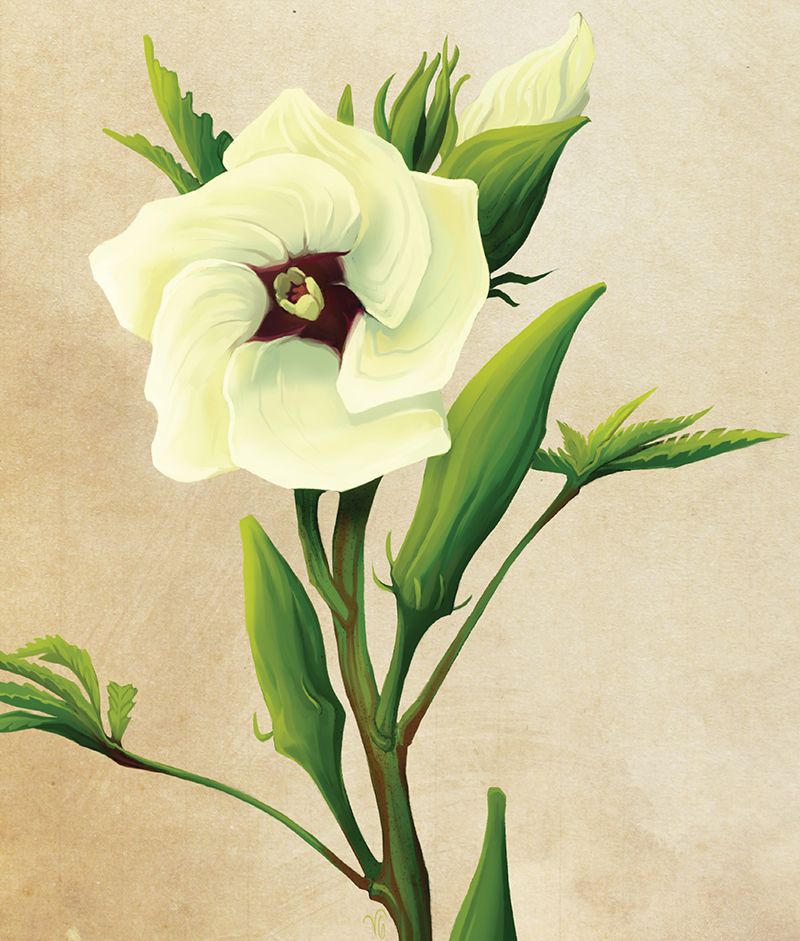If you’ve never grown an okra plant—merely enjoying someone else’s crop deliciously fried, boiled, steamed, stewed, canned, baked, or pickled—you may not know that this staple of Lowcountry gardens bears blooms as beautiful as those you might see on a tropical ornamental. That’s because okra claims membership in the hibiscus family; it’s officially named Hibiscus esculentus. Read on for more about the summertime snack

Great Gumbo
Grown extensively throughout the world, the fruit (it’s technically not a veggie, believe it or not!) was introduced to American shores with the African slave trade. “Gumbo” hails from the Bantu word for ”okra,” and whether cooked with chicken, pork, or shrimp, a stew isn’t a traditional gumbo unless okra is a main ingredient.
Slip ’n’ Slide
When overcooked, the interior of the pod takes on a mucilaginous consistency, resulting in the characteristic “slime” that some people enjoy; others not so much. This gooey substance is high in soluble fiber, however, and okra is used to mitigate malnutrition in developing countries.
Power Pod
Eight steamed or boiled pods deliver only 18 calories, and considering that okra is rich in vitamins A, B, and C—plus calcium, iron, and magnesium—the dish is a dieter’s delight (if you can forgo frying). The plant’s leaves are also edible when cooked similarly to other greens.
International Flavor
In Turkey and parts of Asia, okra is dried before it is served. The French use a species of the plant as a poultice for the chest. And in Mediterranean countries, the seeds are ground and used as a coffee substitute—a practice that was prevalent in the American South when the Civil War disrupted coffee importation.
Easy Come, Easy Grow
Okra is remarkably heat- and drought-tolerant. Requiring full sun, it can be grown in all soil types, though Clemson Extension notes that a sandy loam high in organic matter is ideal. Mark your calendars to plant next summer’s crops first in April and again in June—you can expect to begin harvesting within 60 to 70 days.